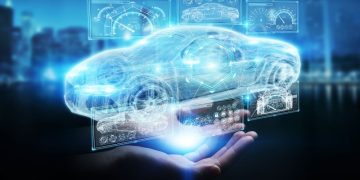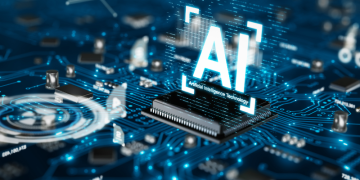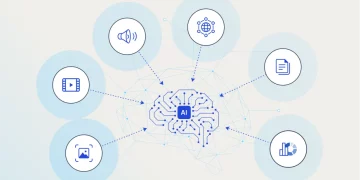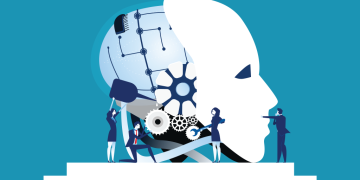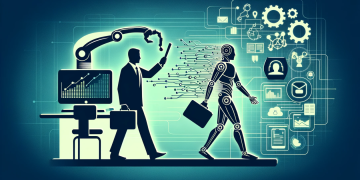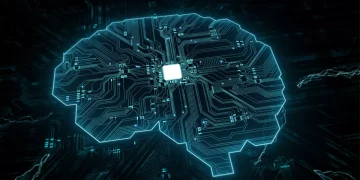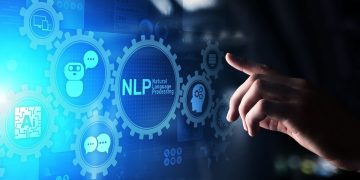Artificial Intelligence (AI) is no longer confined to research labs or sci-fi speculation—it is now a central force reshaping global industries, consumer behavior, and economic competition. From generative models like GPT-4 to real-time autonomous systems, the pace of innovation is staggering. But behind every breakthrough lies a deeper set of questions: What’s truly driving this wave of progress? How sustainable is it? And where do the top experts see things going next?
This article takes a closer look at the state of AI innovation—not just through the lens of product launches and venture capital headlines, but through the voices and analyses of leading researchers, engineers, and technologists who are actively building the future. Their insights offer a grounded view into what’s working, what’s overhyped, and what’s coming next.
1. The Technical Engine: Foundational Models and Algorithmic Breakthroughs
One of the most significant developments in the AI field over the last five years has been the emergence of foundation models—large-scale neural networks trained on massive datasets and capable of being adapted across a wide range of tasks.
Expert View: Bigger Isn’t Always Better
Yann LeCun, Chief AI Scientist at Meta and a pioneer in deep learning, acknowledges the power of these models but warns against overreliance on size alone. “We’re approaching diminishing returns on just scaling parameters,” he has said. LeCun and others argue that new architectural innovations, not just scale, will be key to the next leaps in capability.
Yoshua Bengio and Geoffrey Hinton, two other AI luminaries, are both exploring alternatives to current transformer-based models, including capsule networks, sparse representations, and systems that learn like humans—with fewer examples, more abstraction, and causal reasoning.
Recent Advances:
- Mixture-of-Experts (MoE) architectures to improve efficiency.
- Multimodal AI models that process images, text, and sound simultaneously.
- Sparse attention mechanisms that reduce computational load while maintaining performance.
These are the technical underpinnings that will power the next generation of applications—from dynamic assistants to medical advisors and robotic agents.
2. The Generative AI Revolution: Useful Tool or Overhyped Trend?
The release of tools like ChatGPT, Claude, Gemini, and Sora sparked a global fascination with generative AI. These models can write essays, generate images and videos, compose music, and even design code. But are we entering a new creative era—or just inflating another tech bubble?
Expert View: Generative AI Is Real—But Limited
Andrew Ng, founder of DeepLearning.AI, notes that “generative AI is incredibly useful in specific domains, but it’s not a silver bullet.” He emphasizes the importance of domain-specific fine-tuning and human-in-the-loop systems for real commercial value.
Ilya Sutskever, co-founder of OpenAI, is more optimistic, suggesting we are entering an era where language is the new interface—a future in which humans will command machines through natural conversation.
Still, most experts agree on one thing: the real challenge is aligning these models with human goals and constraints. That includes improving factual accuracy, reducing hallucinations, and building trust into systems that are still poorly understood by most users.
Key Market Trends:
- Generative AI is rapidly being integrated into enterprise tools (e.g., Microsoft Copilot, Salesforce Einstein GPT).
- Open-source models (like Meta’s LLaMA or Mistral’s releases) are increasing access and lowering barriers to experimentation.
- Businesses are shifting from “demo” phases to ROI-driven deployments, seeking real productivity gains.
3. Commercialization: From Research to Scalable Products
Despite the excitement in academic circles, turning cutting-edge AI into scalable products is no small feat. Many promising research projects struggle to find commercial traction, while others become unicorns seemingly overnight.
Expert View: Execution Is Everything
Fei-Fei Li, co-director of Stanford’s Human-Centered AI Institute, stresses that “AI is not just about the model—it’s about the data pipeline, the user interface, the infrastructure, and most importantly, the human context.” She believes successful commercialization requires cross-disciplinary collaboration, not just technical excellence.
Demis Hassabis, CEO of DeepMind, echoes this sentiment. AlphaFold was a landmark scientific achievement, but its real impact comes from how it’s being used by pharmaceutical companies, researchers, and healthcare providers around the world.
Market Challenges:
- Data privacy and compliance (especially under laws like GDPR and the EU AI Act).
- Compute costs, which are rising exponentially as model sizes grow.
- Deployment complexity, particularly in regulated industries like finance, healthcare, and defense.
To bridge the gap between lab and market, many companies are turning to AI platforms as a service (e.g., Hugging Face, AWS Bedrock, OpenAI API) that abstract the complexity while offering scalability and support.
4. The Shifting Investment Landscape: AI Startups, Giants, and Global Competition
AI funding surged in recent years, with billions of dollars flowing into both early-stage startups and well-established players. But as interest rates rise and markets tighten, investors are becoming more selective.
Expert View: The Hype Is Cooling—And That’s Good
Sam Altman, CEO of OpenAI, recently noted, “We’re past the peak of inflated expectations, and what’s left is the hard work of making things useful and safe.” He welcomes the cooling hype, as it encourages real product-building over flashy demos.
Venture capitalists are increasingly focusing on:
- Vertical AI startups solving problems in healthcare, law, education, and manufacturing.
- Agent-based systems that perform tasks autonomously within business environments.
- Specialized models that require less compute but deliver high accuracy in niche domains.
Meanwhile, the race between the US, China, and the EU continues to shape both technological strategy and geopolitics. Experts believe open collaboration in fundamental research will remain essential, even as nations seek competitive advantages in commercial applications.
5. Ethics, Regulation, and Trust: The Necessary Counterbalance
With great power comes great scrutiny. As AI systems grow more powerful and pervasive, concerns around fairness, privacy, bias, and accountability are moving from academic debates to boardroom priorities.
Expert View: Governance Must Move as Fast as Innovation
Kate Crawford, senior principal researcher at Microsoft, argues that we’re entering an “AI accountability crisis.” She calls for clear regulatory frameworks, algorithmic audits, and greater transparency in model development.
Timnit Gebru, founder of the Distributed AI Research Institute (DAIR), has been a leading voice in pushing for ethically grounded AI, especially around issues of systemic bias and surveillance.
Governments are beginning to respond:
- The EU AI Act is the world’s first broad regulation targeting risk-based AI usage.
- The U.S. AI Executive Order and OECD AI Principles seek to balance innovation with safety.
- China is accelerating its own AI governance to stay competitive while preserving social control.
What’s clear is that ethical and regulatory factors will increasingly influence product design, market access, and public trust in AI systems.

6. The Road Ahead: What Experts Predict for the Next 3–5 Years
AI’s trajectory is steep—but what’s next?
Consensus Predictions:
- Smaller, more efficient models will complement giant foundation models, especially in enterprise and edge use cases.
- AI agents that reason, plan, and act autonomously in digital environments will become more useful than today’s static chatbots.
- Synthetic data will help train better models while preserving privacy and fairness.
- Cross-modal and embodied AI (involving sight, sound, and motion) will push machines closer to general intelligence.
- AI + humans working together—not AI replacing humans—will define the next era of innovation.
Cautionary Notes:
- AI capabilities may plateau unless new breakthroughs in architecture or learning theory emerge.
- Compute and energy constraints could slow progress unless efficiency improves.
- Social resistance could rise if the benefits of AI are not distributed equitably.
Conclusion: Behind the Curtain of AI Innovation
At the surface, AI may look like a parade of dazzling demos and billion-dollar valuations. But behind the curtain is a deeper story of scientific rigor, market realism, and ethical reflection. The top experts shaping the field are not just coding faster models—they are thinking carefully about what kind of future they want to help build.
The next wave of AI innovation won’t be defined only by breakthroughs in mathematics or compute—but by how effectively these systems are aligned with human values, practical needs, and global challenges.
As Geoffrey Hinton recently said, after stepping down from Google to speak more openly about the risks of AI:
“We need to think seriously, not just about what we can do with AI—but what we should do.”
That mindset—measured, thoughtful, and forward-looking—may be the most important innovation of all.





